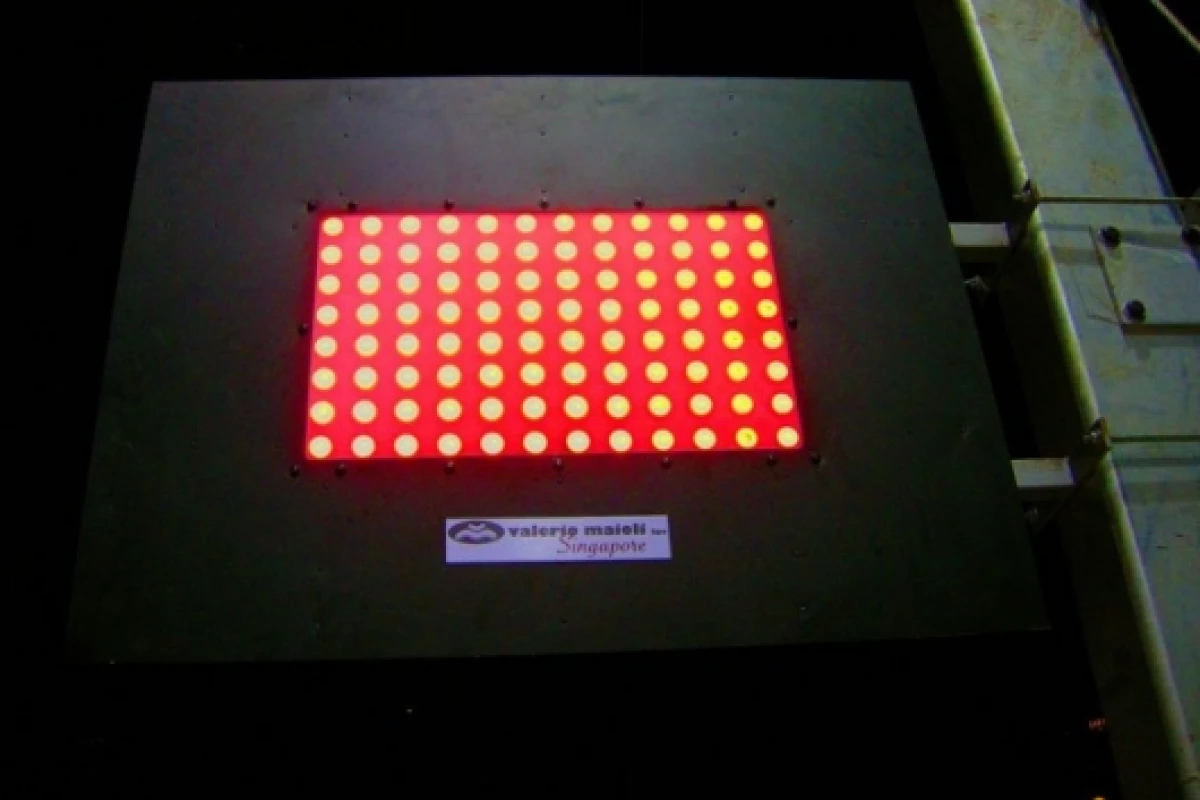April 16, 2008 Every cloud has a silver lining – sometimes it’s just hard to see. One of the potential disadvantages of holding a Grand Prix at night is driver awareness – being able to see the things that count. Turning a negative into a positive, the first-ever night race in F1, the FORMULA 1 SINGTEL SINGAPORE GRAND PRIX to be held on September 28, will also mark the introduction of electronic flag displays as well as the colored flags traditionally waved by race officials to communicate with drivers.
The flag signals, which have been an integral part of Grand Prix motor racing for over five decades, will be supplemented by electronic boards alongside the track. Using technology similar to units used to guide pilots at major airports, the ‘DigiFlags’ will display the different flag colors more effectively at the night race because of the brightness of the display boards.
The system, developed by Singapore GP technical consultants Valerio Maioli Spa, is the result of more than a decade of development at the Barcelona, Imola and Monza racing circuits, in order to meet the stringent requirements of the FIA sporting code. The Singapore street circuit will mark the first-ever use of the Digiflag technology in a Formula OneTM event.
Thirty five display panels will be situated around the track. Controlled by hand-held panels operated by officials at each marshals’ post, they will supplement the traditional flag signals. In addition the race director will have an overview of the warnings being displayed around the entire circuit, allowing more centralized, efficient communication of warnings to drivers.
The announcement of the new ‘digiflag’ technology follows a successful week-long demonstration of the lighting units that will make history when Singapore hosts the world’s first night race on the Formula One™ calendar. Sixteen lighting projectors were installed and tested last week on a 64-meter stretch of St Andrew’s Road in front of the Padang, which in September will see the cars reaching up to 260 km/h.
The system was operated for five hours each night through the week. In addition to allowing members of the public to view the lighting infrastructure, the tests gave valuable feedback on the operation of the systems in all weather conditions, and over a sustained period.
In September, the entire track will be fitted with nearly 1,500 lighting projectors which will be powered by 12 twin-power generators. An overall average of about 3000lux level is required to illuminate the circuit, which is enough to meet High Definition television broadcast standards. As a result, the track will be almost four times brighter than a typical stadium. The demonstration also revealed that the lighting projectors are designed in such a way as to avoid glare to spectators as well as to ensure the safety of drivers during the race.
Installation of the full lighting system will be carried out in stages, starting with the Pit Straight at the end of May with completion targeted for 31 August 2008, a month ahead of the race on 28 September.
The live demonstration of the lighting system is the latest milestone as Singapore prepares for race day in September. The Pit Building is 65 percent complete and well on schedule to be ready by the end of June. The modification works to existing roads, such as the removal of kerbs and traffic islands along the track, as well as the expansion of the Promenade in front the National Day Parade seating gallery, are in the advanced stages of completion.
The remaining of the road works, such as the construction of a new track section in front of the pit building and the construction of a service road and tunnel to the paddock, are expected to be completed by late May.









